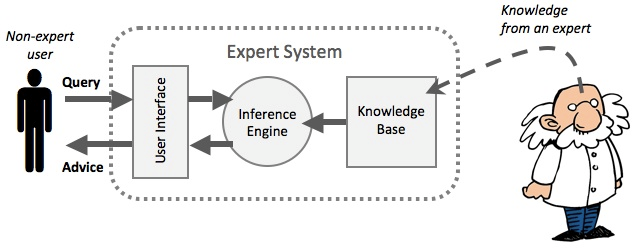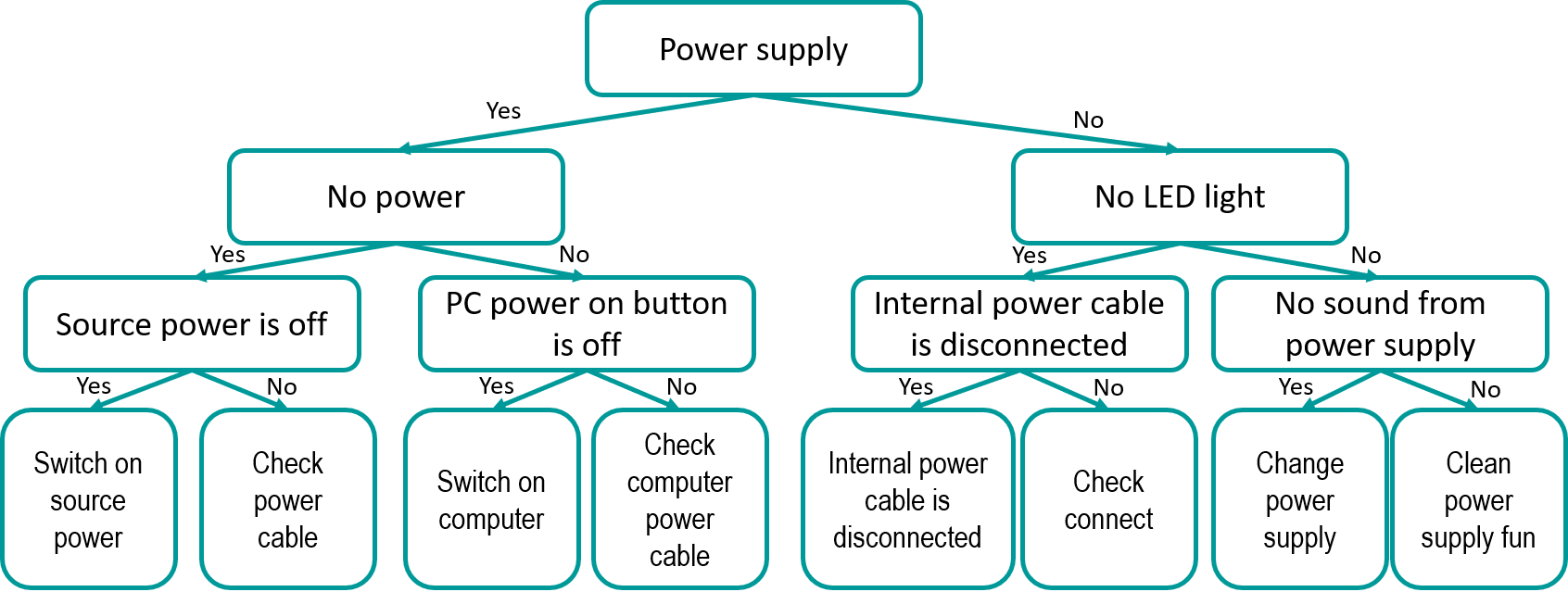12.5.1.2 create a simple expert system
Expert system (ES)
Definition
An expert system is artificial intelligence software that uses knowledge stored in a knowledge base to solve problems.
Difference between AI and Expert System
Description
Data is added to the knowledge base of an expert system by people who are experts in a particular field, and this software is used by a non-expert user to get some information. Expert systems can advise users, as well as explain to them how they came to a certain conclusion or advice. They are widely used in many fields such as medical diagnostics, accounting, programming, gaming, etc.

Components of an expert system:
Knowledge base: The knowledge base is facts and rules. It consists of knowledge in a specific area, rules for solving a problem.
Inference engine: The function of the inference engine is to fetch the relevant knowledge from the knowledge base, interpret it and to find a solution relevant to the user’s problem. The inference engine acquires the rules from its knowledge base and applies them to the known facts to infer new facts. Inference engines can also include explanation and debugging abilities.
User interface: This module makes it possible for a non-expert user to interact with the expert system and find a solution to the problem.
Knowledge acquisition and learning module: The function of this component is to allow the expert system to acquire more and more knowledge from various sources and store it in the knowledge base.
Explanation module: This module helps the expert system to give the user an explanation about how the expert system reached a particular conclusion.
Characteristics of an expert system:
- Human experts are perishable but an expert system is permanent.
- It helps to distribute the expertise of a human.
- One expert system may contain knowledge from more than one human experts thus making the solutions more efficient.
- It decreases the cost of consulting an expert for various domains such as medical diagnosis.
- They use a knowledge base and inference engine.
- Expert systems can solve complex problems by deducing new facts through existing facts of knowledge, represented mostly as if-then rules rather than through conventional procedural code.
- Expert systems were among the first truly successful forms of artificial intelligence (AI) software.
Limitations:
- Don’t have human-like decision-making power.
- Can’t possess human capabilities.
- Can’t produce correct result from less amount of knowledge.
- Requires excessive training.
Advantages:
- Consistency – always provides the same decision without human bias.
- Availability – can work 24/7 without fatigue.
- Speed – processes large amounts of information quickly.
- Knowledge preservation – stores expert knowledge for future use.
- Decision support – helps non-experts make informed decisions.
- Cost-effectiveness – reduces the need for multiple human experts.
Disadvantages:
- High development cost – expensive to build and maintain.
- Limited knowledge – restricted to the rules and data entered.
- Lack of adaptability – cannot learn or update knowledge without reprogramming.
- Complexity – difficult to design for broad or vague problem areas.
- Dependence on quality of data – inaccurate input leads to incorrect output.
- No common sense – cannot apply human intuition or judgment.
Example of a simple expert system

Source: https://www.geeksforgeeks.org/expert-systems/
Example of current expert system "WebMD Symptome checker"
Questions:
- Define what is Expert system.
- Components of an expert system. Explain the purpose for each component.
- Give two characteristics of the expert system.
- Explain two advantages of the expert system.
- Explain two disadvantages of the expert system.
Exercises:
Ex. 1
Ex. 2
| 
